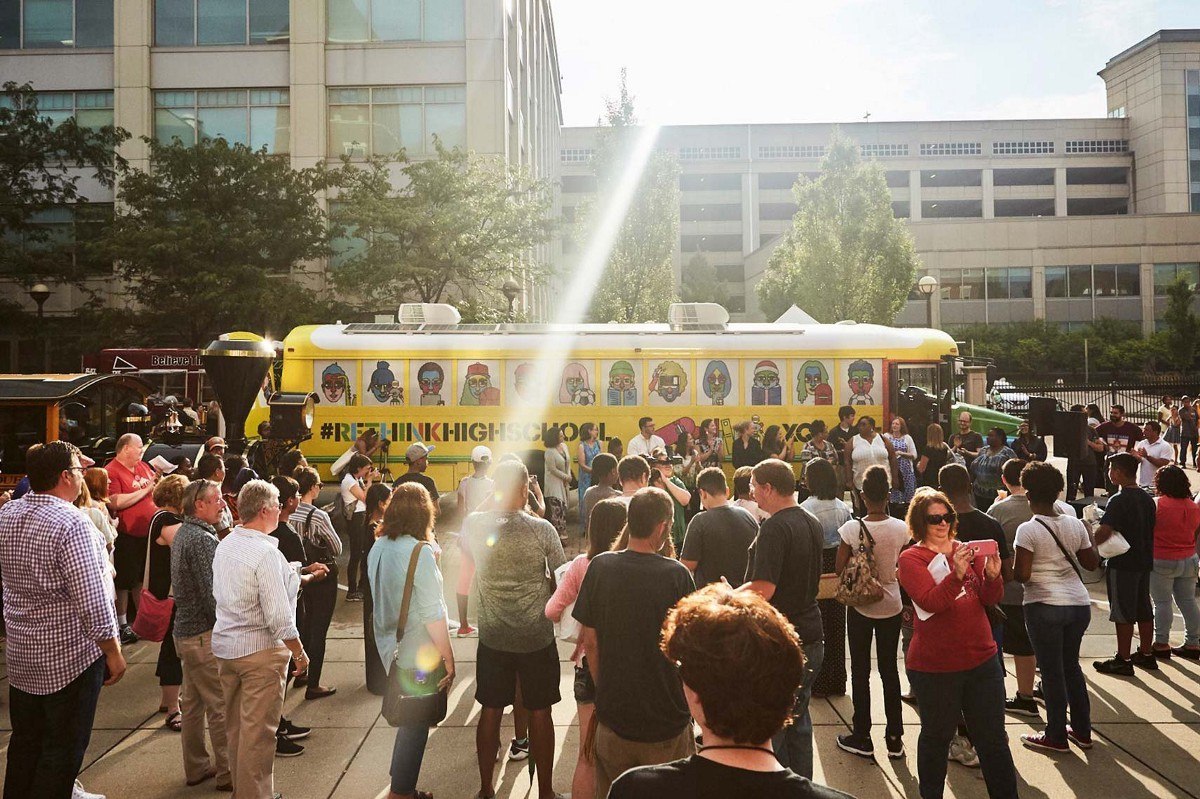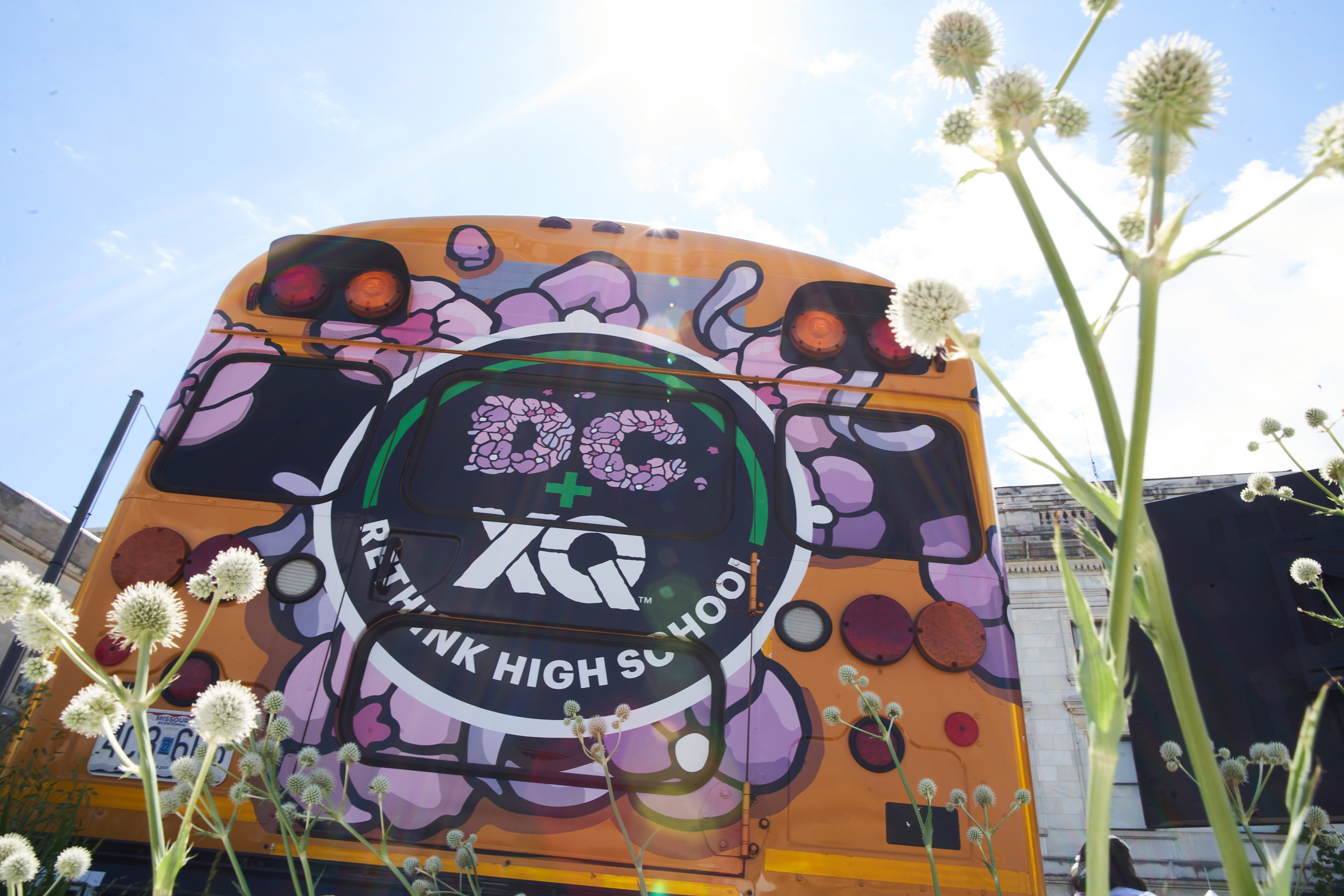Four Practical Steps to Deepen School & Community Connections
The answer to rethinking high school might be within your community. Here are how four schools connect students with their communities.

The strategic use of partnerships is a common theme and stand-out strength among the future XQ Super Schools. When educators extend learning into and across the community, students get to learn in diverse settings and through a wide range of activities — bringing both variety and authenticity that allows them to simultaneously develop and apply knowledge and skills. School-community partnerships expand networks for both students and adults, giving each unprecedented access to one another and helping them to appreciate the value that each brings to the partnership. Through our work with the 18 schools on a journey to rethink high school, we’ve picked up some practical strategies for deepening school and community partnerships.
Co-locate with a key institution or organization in your community

Some schools redefine where teaching and learning happens by co-founding or co-locating their school with a community partner. Both Grand Rapids Public Museum High School in Michigan and Crosstown High School in Tennessee were founded in partnership with local institutions or organizations.
Grand Rapids Public Museum High School was founded with the Grand Rapids Public Museum, one of the oldest history museums in the country. This allows students to use thousands of artifacts as the basis for their learning.
Located in the Crosstown Concourse, a groundbreaking real estate redevelopment project of a 1.2-million-square-foot building that originally housed a Sears mail-order processing warehouse, Crosstown High in Memphis was founded in partnership with Crosstown Arts, a contemporary arts organization dedicated to cultivating the creative community in Memphis. This “vertical urban village” houses arts and healthcare organizations alongside 250 residences, Crosstown High School, higher education branches, local businesses and much more. As Crosstown High’s Executive Director Chris Terrell says, “We’ll be able to make real world connections with kids at a higher rate than probably a traditional high school would just because of that proximity to a lot of really dynamic organizations inside the concourse.”
Co-location can offer unique and expanded opportunities beyond learning. For instance, Da Vinci RISE High, another XQ School, is co-located at A Place Called Home to ensure students receive a full set of wraparound services.
Ensure students learn from and alongside experts and professionals

Students can grapple with real-world tasks and problems with business and community partners, even if they are not co-located.
At Iowa BIG in Cedar Rapids, students work with peers from across the city on projects that matter to them and to others in the community. These rigorous projects are generated and co-designed by business and community partners to solve real problems and needs. One project involves a team of students who are producing a new card game that helps mental health professionals and their patients teach appropriate responses to life’s challenges. This game involves concepts around neurology of adverse childhood, resilience psychology and the mechanics of game theory.
At Círculos in Santa Ana, California, students will learn alongside dozens of businesses and nonprofit organizations. When it opens in 2018, students will be integrated into local organizations and businesses, allowing them to engage in authentic project-based learning while simultaneously broadening their support networks. Team members “want to broker access to opportunity and resources to change privileged knowledge to common knowledge.”
When New Harmony High opens in 2018, students will have a flexible learning environment that is light on time spent in typical classrooms and heavy on lab work and hands-on experience, with many opportunities for students to work side by side with scientists and other community partners. Possibilities include institutions and community organizations such as Southern Louisiana Wetlands Discovery Center, Tulane University Biodiversity Research Institute, and the University of New Orleans Coastal Education Research Facility.
If you cannot build in authentic learning experiences and partnerships through your curriculum, consider using key partnerships after school or through other extended learning opportunities you provide to your students. Both Washington Leadership Academy and Brooklyn Laboratory High Schoolbring in partners after school, connecting students with multiple organizations, businesses and institutions, expanding both students learning experiences and social networks.
Provide students with early access to the professional world

Schools can “pull back the curtain” on the professional world by offering students opportunities to have contact with professionals and move seamlessly from the classroom to the workplace. Students will see that the skills they are learning in school are actually used in the professional world.
Internships are one way to achieve this, especially when they are customized to reflect students’ interest, immerse them in actual work settings, and connect them with people who can help them explore careers. This is especially valuable for students who are first in their families to go to college and may lack meaningful connections to the professional world.
Several of the future XQ Super Schools will offer internships, apprenticeships, and certification programs. Students will perform real tasks at their internships, preferably working on projects of their own design, where a real-life workplace mentor is guiding their learning and exploration.
Create opportunities for students to experience higher education early and often

Partnerships with higher education institutions help students learn beyond the conventional curriculum. Many of the future XQ Super Schools will have partnerships that will enable students to enroll in a class at a nearby campus, online or take college courses offered on-site at their school; giving them unprecedented access to college-level course in math, science, humanities, and foreign languages that the high schools could never hope to offer.
Purdue Polytechnic High School was created in partnership with Purdue University. Its mission is to equip students, particularly underrepresented minorities, into a position where they are well-equipped to access high-demand and high-tech STEM (Science, Technology, Engineering, and Math) careers. The high school curriculum will mirror the Purdue Polytechnic Institute on Purdue’s West Lafayette campus and serve as a pipeline to the college. Purdue will also provide programs that help students’ transition from high school to college and college-level courses. Purdue faculty will be invested in the student experience throughout the educational continuum — teaching in the classroom, providing professional development to certify high school teachers to teach dual credit courses and supporting students as they reach college.
Through higher education partners, Furr Institute for Innovative Thinking (FIIT) in Houston has processes, programs and personnel in place to ensure students will receive information and support for preparing for, attending and succeeding in college. In addition, FIIT students will earn dual credit from Houston Community College.
In examples like these, students experience the entire community as their classroom. That’s because the teachers, leaders and community partners embrace the idea that foundational learning works best when paired with experiential learning. They recognize that schools can support workforce development, civic engagement, and community revitalization.
A strategy for powerful partnership is just one of the six XQ Design Principles that drawn from the innovative work of teachers and school leaders from across the country. As these educators continue their efforts to rethink high school, their students will graduate with an expanded set of Learner Outcomes that prepare them for an ever-dynamic, increasingly-complex world.









